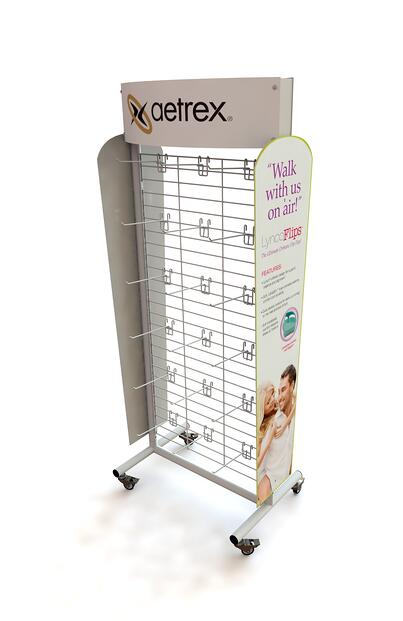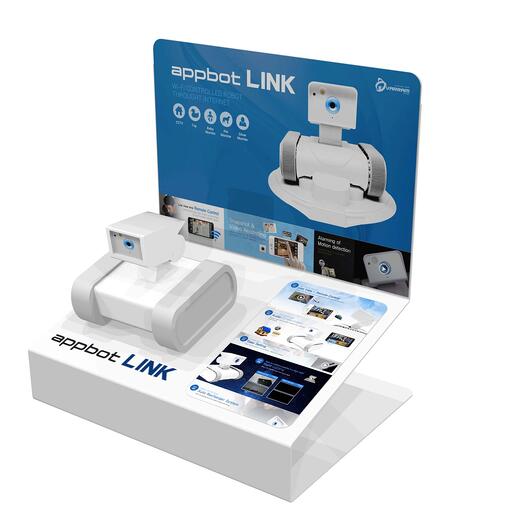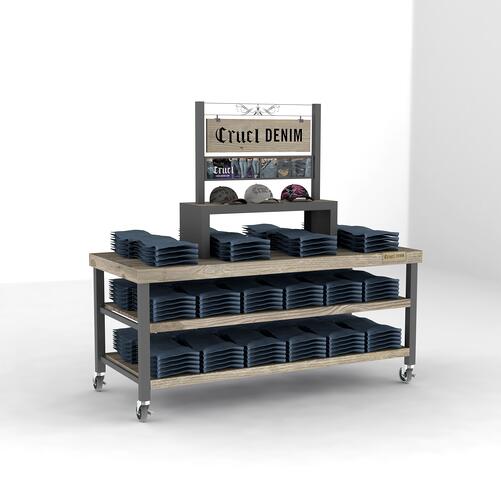One of the things that is challenging about being in the business of making custom retail displays is you are constantly designing and manufacturing completely new and different products every week. We have a line of stock displays that we update and refresh periodically, but that part of our business is less challenging because we basically design it once and then just continue to reproduce it.
Working with so many different customers in so many different industries keeps life interesting. This past week we worked on numerous POP displays for the wine and spirits companies, a countertop display for a company that makes home security cameras, a POS literature display for sex addicts, a consumer electronics display for a personal sensors company, a footwear display, a countertop acrylic display for a company to demonstrate the superior viscosity of its grease relative to its competitors, a couple of food and beverage displays, a t-shirt merchandiser, and a few other early stage projects.
The benefit of working on so many different types of POP display projects is that it makes you somewhat of a generalist and enables you to take a step back and see patterns that relate to what works and what doesn’t work. Based on our experiences, here are 10 things to consider that should help make your next custom retail display project more successful:
1) Determine the Purpose and Objectives of your Display – It’s important to know up front what you want your POP display to accomplish. In most cases, the purpose is to maximize product sell-through, but in some cases, it’s just about establishing a retail presence, introducing an unknown brand to consumers, or getting a chance for some instore advertising.
2) Establish a Target Budget – Establishing a target budget range is a really important step before beginning the design process. Even if you have no idea what a display might cost, with a little research and some analysis of your own product economics, you can arrive at a reasonable budget to give a design team some direction. Not having a target budget creates a huge amount of inefficiency and is likely to generate suboptimal results.
3) Involve a Company with Manufacturing Experience in the Design Process – We’ve seen more than our fair share of customers who hire an advertising firm or other creative group to develop POP concepts. While we generally admire their creativity, in many cases the concepts they create are difficult to execute or impractical to manufacture. It’s fine to work with these firms, but we think the outcome will be better with the involvement of a POP company that knows how to manufacture displays.
4) Keep it Simple – Too often we find that our customers want to try to do too much with their displays. This comes in the form of trying to creative a modular display that can do everything to trying to make too many points about how great your product is. Our advice would be to keep things simple and don’t try to overengineer your display. Keep your messaging concise, direct, and on point. A consumer will only remember 2 or 3 things about your product so don’t give them a laundry list of features and benefits that won’t stick with them.
5) Consider the Full Process from Design through Implementation – In designing your display, think about the display program in its entirety. That means it’s not just about the design but also about how you are going to ship it safely and cost effectively, how it will be assembled or installed in the store, how it will be service, how you will replenish your product, etc.
6) Get Started Early – We know that in many cases opportunities come up that require you to move quickly in order to land a retail account opportunity, but whenever possible, we recommend starting as early as possible. Starting early will save you money and result in a better display outcome.
7) Focus on Revenue and Sales Lift – While managing your display cost is important, the ultimate goal of a POP display is to sell more product. Focusing your attention on getting into stores as soon as possible and creating a point-of-purchase vehicle which will sell your product is of paramount importance and ultimately dwarfs the couple dollars you might save by iterating too much on the display design.
8) Test and Measure – The majority of our customers who are creating a new POP display don’t really know how well it will work. They may be trying a display for the first time or be selling in a new retailer. They might not really know if adding a video or LED lighting will drive more sales. Whenever possible, particularly if you have the luxury of time, we recommend testing a display and measuring the results. Doing a 50-store test can be enlightening and beneficial before embarking on a 2000-store rollout.
9) Think Holistically – By thinking holistically, we mean consider not just your product and your target customer, but think about your competitors, their product offerings, what you offer that they don’t, and how you can create a successful niche for your product. That type of thinking will help you know what your POP display should emphasize.
10) Be Different, Be Bold and Strive to Stand Out – Let’s face it, retail is crowded. Stores are shrinking and more and more products are flooding the market. To be noticed and to be relevant you need to stand out from the crowd and separate your product from all the retail noise. In thinking about your POP display, it’s fine to look to competitor displays for inspiration, but look to raise the bar, to stand out. Embrace being different.

Jim Hollen is the owner and President of RICH LTD. (www.richltd.com), a 35+ year-old California-based point-of-purchase display, retail store fixture, and merchandising solutions firm which has been named among the Top 50 U.S. POP display companies for 9 consecutive years. A former management consultant with McKinsey & Co. and graduate of Stanford Business School, Jim Hollen has served more than 3000 brands and retailers over more than 20 years and has authored nearly 500 blogs and e-Books on a wide range of topics related to POP displays, store fixtures, and retail merchandising.
Jim has been to China more than 50 times and has worked directly with more than 30 factories in Asia across a broad range of material categories, including metal, wood, acrylic, injection molded and vacuum formed plastic, corrugated, glass, LED lighting, digital media player, and more. Jim Hollen also oversees RICH LTD.’s domestic manufacturing operation and has experience manufacturing, sourcing, and importing from numerous Asian countries as well as Vietnam and Mexico.
His experience working with brands and retailers spans more than 25 industries such as food and beverage, apparel, consumer electronics, cosmetics/beauty, sporting goods, automotive, pet, gifts and souvenirs, toys, wine and spirits, home improvement, jewelry, eyewear, footwear, consumer products, mass market retail, specialty retail, convenience stores, and numerous other product/retailer categories.







